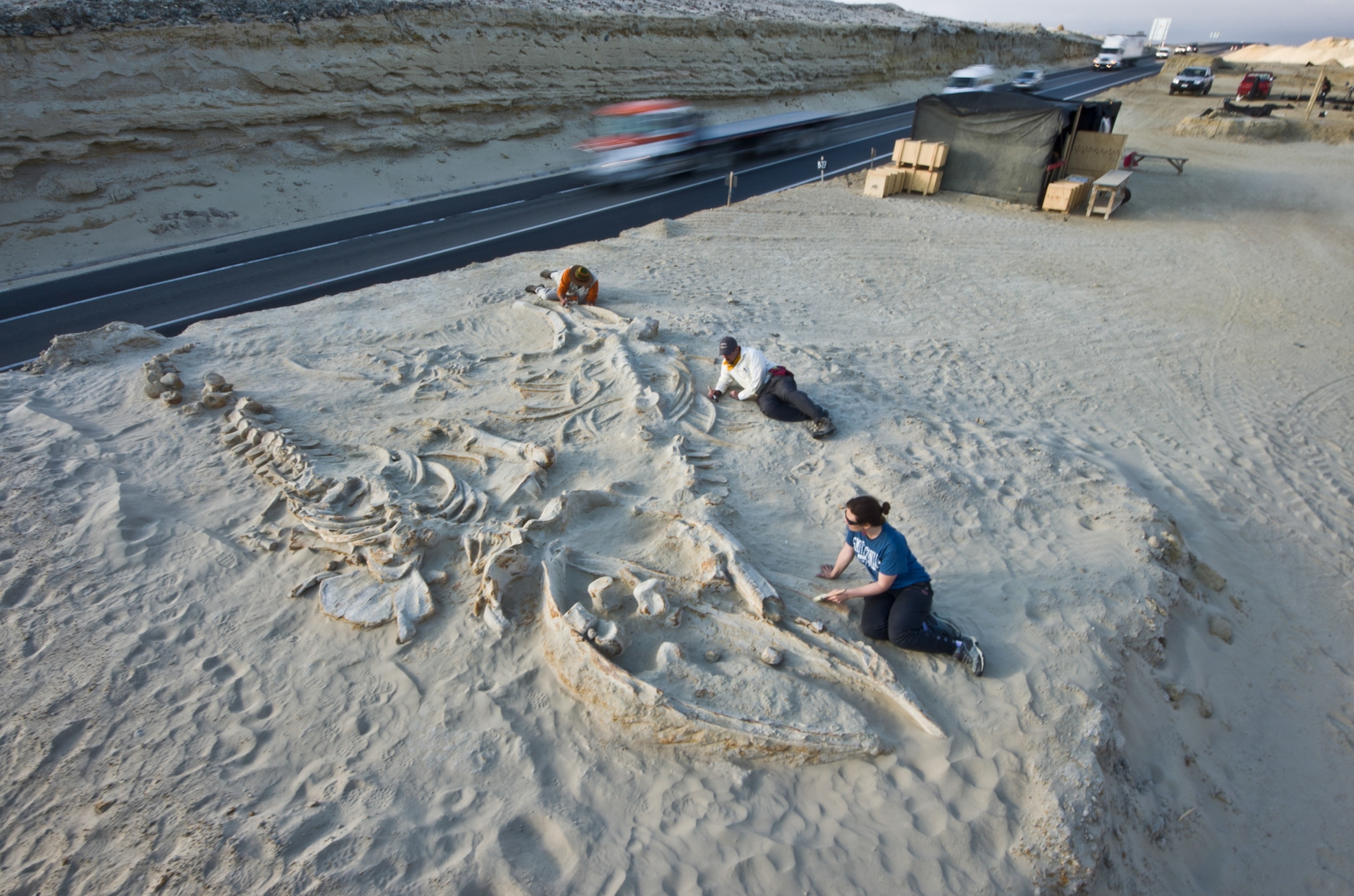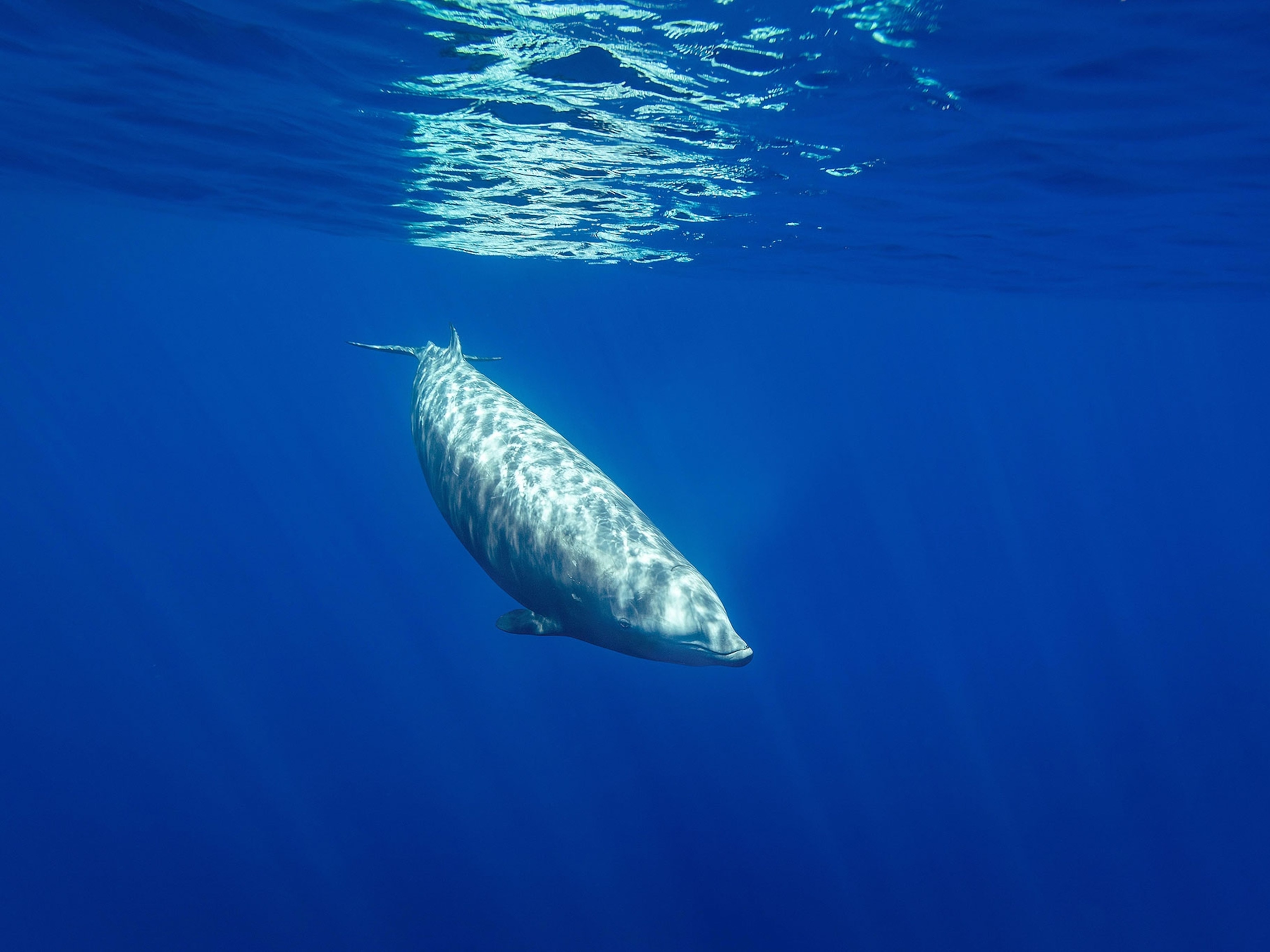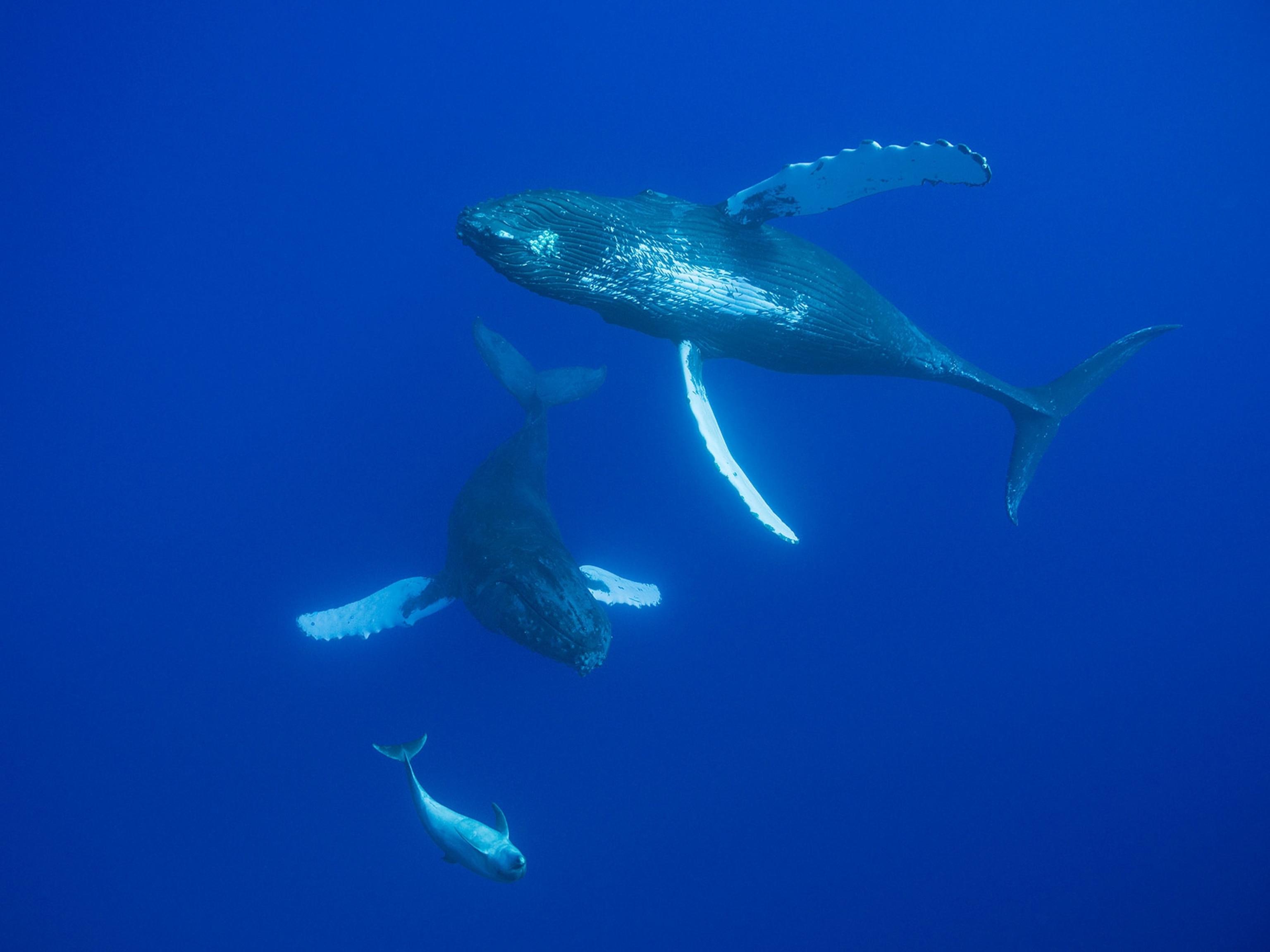
Tiny Algae Responsible for Mysterious Fossil Whale Graveyard?
Algal blooms might have been responsible for mass deaths in ancient baleen whales.
Ever since a highway construction crew in Chile uncovered a fossil graveyard of some 40 prehistoric whales in 2010, with skeletons dating back more than five million years, scientists have wondered why so many giant animals died in one place.
This week, a team of them proposed an answer: The huge baleen whales were felled by microscopic algae.
Toxins produced by prehistoric algal blooms could have been potent enough to kill off massive numbers of marine animals, according to a study published Thursday in the journal Proceedings of the Royal Society B.
The fossil site, uncovered by a road crew working on a stretch of Pan-American highway in the Atacama Desert, has yielded complete and nearly complete fossil baleen whale skeletons, including calves and adults.
Nicholas Pyenson, a paleontologist at the Smithsonian's National Museum of Natural History, and colleagues write in their paper that mass mortality events occurred repeatedly over a period of 10,000 to 16,000 years in the late Miocene epoch, between 11 and 5 million years ago.
The baleen whales likely died out at sea, the study says, before waves washed their bodies ashore. The dead whales settled in a protected area that kept the carcasses safe from scavenging and allowed for their preservation.
The Atacama fossils were arranged in four distinct layers, suggesting a recurring cause for these mass deaths, says Pyenson, the lead study author.
These ancient baleen whales are ancestors to a modern-day group of whales that includes blue whales—the largest living animal on Earth—and humpback whales.

Brought Down by Algae?
Algal blooms occur when microscopic algae—the oldest members of the plant kingdom—grow in such high numbers that they can turn the ocean red. That's why they're also called red tides, explains David Caron, an expert on algal blooms at the University of Southern California in Los Angeles.
What makes an algal bloom harmful is the presence of algal species that produce toxins like domoic acid, which can cause paralysis and death in mammals and birds.
Today filter feeders—anchovies or clams, for example—can ingest the toxin-filled algae, concentrating the chemicals in their tissues. Predators like sea lions, whales, or birds eat those fish and clams and get hit with concentrated doses. If the predators eat enough of the toxin, they can develop problems.
There is evidence of ancient harmful algal blooms, Pyenson says.
"A colony of seabirds was wiped out in the fossil record in Florida," he says, thanks to a bloom of toxic dinoflagellates—a type of microscopic algae—about five to three million years ago.
Because the researchers working at the Chilean site also found fossil remains of seals, an extinct species of sperm whale, an aquatic sloth, and billfish, they discounted the possibility that a virus or some other disease was the culprit.
That’s because marine diseases tend to be host specific, meaning they infect a single species or a group of closely related species. A morbillivirus plaguing dolphins on the U.S. East Coast in recent years is one modern example.
Watch What You Eat
Pyenson acknowledges that the fossils in the ancient Chilean graveyard contain herbivores and carnivores, which wouldn't be eating the same things.
But he points to modern-day examples of herbivores like manatees dying from harmful algal blooms, either by inhaling the toxins or by eating sea grasses covered in the algae.
It's possible that herbivores in the vicinity of carnivores in an ancient Pacific Ocean died of the same ultimate cause, Pyenson says.
The theory has present-day analogues, says Caron, who was not involved in the study.
"There's certainly thousands of sea lion deaths, dozens to hundreds of dolphins, untold hundreds of pelicans that all have been wiped out with the same toxic event," he says.
Caron says the idea that algal blooms killed off Chile’s ancient baleen whales is feasible.
They're like cancer, he explains, in that there are many kinds of cancers and likely many reasons that cancers occur.
It's the same with harmful algal blooms. Not every algal species produces toxins, and not every toxic alga produces harmful substances every time, Caron says.
Marine algae undergo boom-and-bust cycles, explains Caron, so harmful algal blooms do occur repeatedly. But scientists are still trying to figure out what sets them off.
Follow Jane J. Lee on Twitter.





